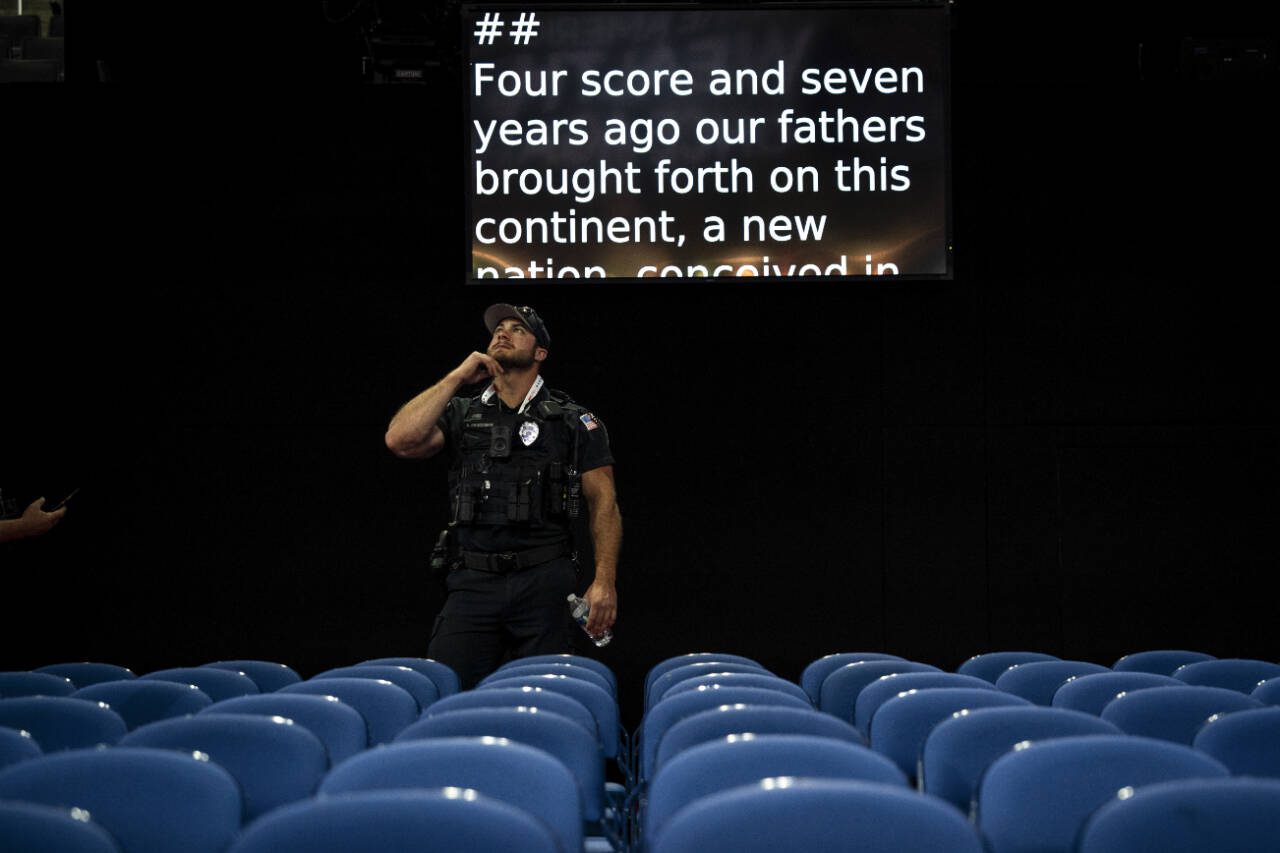By The Herald Editorial Board
For the largest part, the right words were said following Saturday’s attempted assassination and shooting at a rally for former President Trump, injuring Trump, leaving a rally attendee dead and critically wounding two others.
President Biden, as his high office demands, deplored the shooting and called for the nation to “lower the temperature in our politics.”
“We cannot, we must not, go down this road in America,” he said in an Oval Office address on Sunday. “There is no place in America for this kind of violence, for any violence, ever. Period. No exceptions. We can’t allow this violence to be normalized.”
In the immediate aftermath, similar sentiments from both Republicans and Democrats were shared: relief that Trump had survived with only a minor injury, shock over the assassination attempt, grief over the deadly violence that cost the life of a father shielding his family from the bullets, calls for unity, moves to suspend negative campaign messaging.
For others, anger soon got the best of magnanimity, with blame assigned to others — specifically Democrats and the media — for the actions of a solitary individual.
Some criticism is warranted.
Trite comparisons of Adolf Hitler to any but those responsible for genocide serve to lessen the impact those crimes should carry for all of history.
And questions are legitimately raised around the security trusted to the Secret Service in tandem with state and local law enforcement. But useful conclusions — rather than speculation and conspiracy theories — will await informed responses to those questions, to judge any lack of foresight or breakdown in communications.
Understandably, as we try to make sense of such horror, we want to know the motivation of the man responsible, as if motive would allow us to better identify the cause, place blame or avoid inconvenient conclusions. But such explanation is likely to be incomplete, if ever known at all. What information is available now shows the 20-year-old man to be more opaque cipher than easily characterized political ideologue.
What we do know is this: Like other agents of mass shootings, driven by fear, hatred, political bias, mental illness or their combination, the assailant had access to a semi-automatic firearm, one that allowed him to shoot at a distance and avoid the security measures on the rally grounds.
Far greater carnage would likely have occurred if the assailant had also used a bump stock or similar device — recently made legal again by a U.S. Supreme Court majority — that would have turned his semi-automatic weapon into a de facto machine gun; instead of eight shots he might have been able to release 80 rounds into the crowd and those on the dais. The resulting outcome is at once unthinkable and unavoidable, as that threat still looms for gatherings to come, political and otherwise.
Some will continue to defend both assault-style weapons and bump stocks as part of Americans’ Second Amendment right, even as their illegal and horrific use provides clear evidence of their useless application in hunting or protection of self and home.
Yet removing the deadliest firearms from the equation still leaves us with the threat of mass political violence, as was made clear on Jan. 6, 2021, when the might of a mob was used to storm the U.S. Capitol with the intent of stopping the final certification of a free and fair election that selected Joe Biden as president.
Preventing that brand of violence will require an examination of ourselves; the biases that drive our distrust in government, in the structure of our elections and in our fellow Americans. And in the divisions that our political tribes demand that we keep wide and unbridged, lest they lose their influence over us.
We can and should demand that candidates for political office lower the temperature of their rhetoric, make accurate cases for their records, their policies and their initiatives, while also honestly pointing out differences in positions without playing to prejudices and relying on misrepresentations.
Ultimately, however, the heaviest lift in turning away from violence and division is borne by Americans themselves, with the responsibility to accurately weigh candidates and issues, gather the information necessary for the best choices, register those decisions through our vote and — importantly — accept the results of those elections with grace and a resolve to assist those elected in their work and ours. (Note: That work still allows for dissent and debate.)
Years before the Civil War, in 1856, Abraham Lincoln joined the Illinois Republican Party at its formation and gave an extemporaneous speech that denounced slavery but sought to avoid bloodshed over the issue.
Although a verbatim transcript of the 90-minute speech was not written down, an account of the speech quotes Lincoln:
“Do not mistake that the ballot is stronger than the bullet. Therefore let the legions of slavery use bullets; but let us wait patiently till November, and fire ballots at them in return; and by that peaceful policy I believe we shall ultimately win.”
Others have quoted Lincoln as saying: “To give the victory to the right, not bloody bullets, but peaceful ballots only, are necessary.”
The United States, of course, did not avoid the bullets of the Civil War, but Lincoln was correct in the final outcome.
Again, we face the choice between ballot and bullet, election and insurrection. The path remains ours to choose.
Talk to us
> Give us your news tips.
> Send us a letter to the editor.
> More Herald contact information.

























